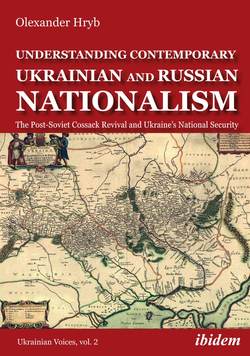Читать книгу Understanding Contemporary Ukrainian and Russian Nationalism - Olexander Hryb - Страница 9
На сайте Литреса книга снята с продажи.
1 Insecure Identities and the Nationalist Revival
ОглавлениеFundamental changes in Europe since the 1990s, with the further integration of the European Union (EU) and a restructuring of the political space in Eastern Europe, have highlighted the limits of our understanding of European nation building, national revival and nationalist movements. In Western Europe, the nation-state is being challenged by EU processes of legal and socio-economic integration that some fear may lead to the creation of a super-state and at least partly helps explain the Brexit logic. In Eastern Europe, the Euro-Atlantic integration of former Warsaw Pact countries led to the Russian neo-imperialist attempt to create an EU alternative, the Eurasian Economic Union. The re-emergence of ethnic violence and of militant forms of nationalism in Eastern and Central Europe were as unexpected as the fall of the Soviet Union. Russian-Ukrainian armed conflict over Crimea and Donbas could be viewed as a delayed Ukrainian war of independence that was not foreseen by the mainstream academia. Scholars continue to debate about the nature of nationalism and of nations; about definitions, typologies, the role of ethnicity and ethnic heritage, and the conditions and mechanisms of national revival. There is no general consensus about these, nor is there a unified theory of nationalism or a clear understanding of its causes or prospects. And yet the future of the European community depends on the evolution of the EU member nation-states, hence understanding nationalism would help to secure peace in its own expanding home.
This monograph explores the causes and conditions of national(ist) revivals. It does so by, first, developing a framework based on a synthesis of Eastern and Western European perspectives on nationalism; and, then, applying this framework to the case of the Cossack nationalist revivals in Russia and Ukraine.
In order to develop a framework for analyzing nationalist revivals, the monograph explores Eastern (Russian and Ukrainian), as well as Western, theoretical perspectives relating to national identity, national and ethnic communities, and nationalist movements. Soviet ethnography and Soviet ethnic engineering continue to influence both academic discourse and state policies in the Russian Federation and Ukraine with respect to post-communist nation building. Moreover, elements of Soviet and post-Soviet theoretical perspectives on nationalism can contribute much to the study of nationalist phenomena, in the West as well as in the East. Thus, the monograph not only introduces largely unknown Russian and Ukrainian (Soviet and post-Soviet) theories into the English-language literature, but it also suggests how these theories might be synthesized with Western traditions to produce a better framework for understanding nationalism. To this end, this monograph proposes a synthetic framework based on an analysis of commonalities and divergences in the Western and Eastern traditions.
Central to this framework is the concept of societal or identity security. The monograph endeavors to show the importance of societal security to an understanding of when and why nationalist movements turn violent by applying it to the case of the Cossack nationalist revival in Russia and Ukraine. The term “security,” therefore, is used in this research in reference to the individual (e.g., Cossack individuals), the group (Cossacks/nationalist organizations), the state (e.g., the Ukrainian nation-state, the Russian Federation), the international system (the European Union/NATO security community vs. the Eurasian Economic Union) and is looked at on the different levels of analysis discussed in Chapter 3. For other conceptual uses of the term security, see the discussion by David Baldwin, “The Concepts of Security” (Baldwin 1997).
Research on Cossack nationalism not only demonstrates the utility of the proposed framework and its central concept (societal security); it also clarifies the distinction commonly drawn between “ethnic” and “civic” nations. In doing this, it provides insight, not only into nation building in the former Soviet Union; it also clarifies the similarities and differences in origin and evolution of “Eastern” and “Western” nations.
